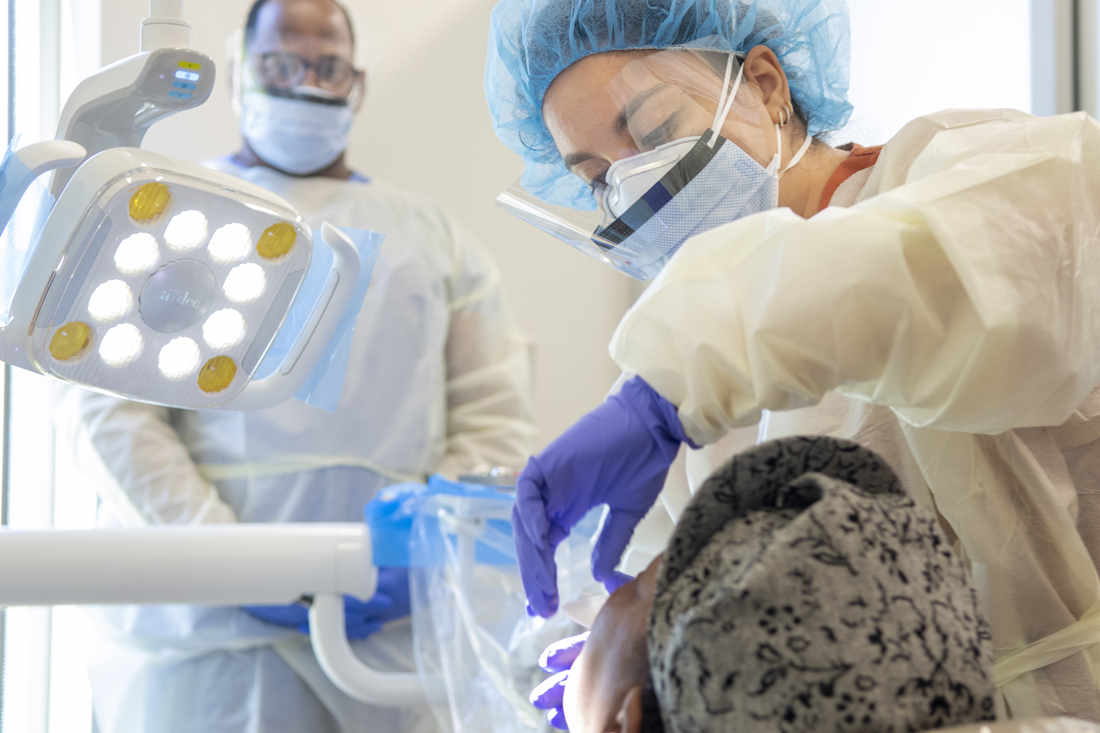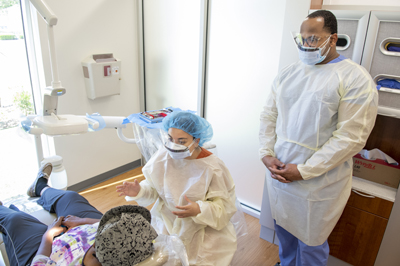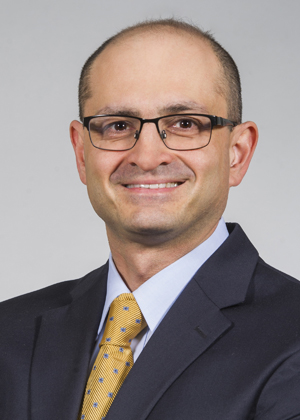AEGD wishes granted

A ripple effect of positive change is afoot in the Advanced Education in General Dentistry program, thanks to five-year grant funding from the Health Resources and Services Administration of the U.S. Department of Health and Human Services.
Impact in the classroom and in an off-site clinic is already being felt by AEGD graduate students like Dr. Neusha Rahmati ’20. With the grant funding, AEGD began phasing in changes last July by receiving a green light to add two part-time faculty members, a lab technician, a teaching fellow, one or two additional graduate students to its current eight, as well as rotating graduate students to work at the new Dr. M.C. Cooper Dental Clinic in South Dallas.
Rahmati says her hands-on community service experience at the off-site clinic this semester has been exactly the professional enrichment she had hoped for.

“Without the Cooper clinic rotation, I would not have had the opportunity to serve the underserved residents of Dallas, help treat their emergent pain or infections, and gain more experience in extracting teeth,” she says. “It has been wonderful being able to use both the clinical and patient management skills I developed in residency in a community health setting.”
Since Rahmati and her fellow graduate students started working at the clinic last month, she says both students and patients are the direct beneficiaries of the implemented improvements, which have seeped into all aspects of the program.
“We have more faculty to work with, which widens our scope of learning,” she says. “A lab technician allows us to complete more lab work in house, which benefits our patients, as well as giving us the ability to be more involved in the lab process. As time goes on, these changes will become even more beneficial for following classes.”

That’s exactly the growth that AEGD Director Dr. Amirali Zandinejad and AEGD Associate Program Director Dr. Marta Revilla León, hoped for, most notably with the improved faculty-to-student ratio, which now touts more one-on-one interactions instead of one faculty member working with seven or eight graduate students at a time.
“So this way the residents can be more efficient, quicker, faster. That improves their education, first, because faculty can spend more time with each resident,” he says. “And now maybe treatment takes fewer appointments because more faculty means everybody is more efficient. Plus, the revenue goes up.”
Patients also benefit when they save time by needing fewer appointments. For instance, it typically takes six to eight sessions to make a denture, but fewer visits may be required once a lab tech starts making dentures onsite, says Zandinejad. He also predicts cost savings as a result of eliminating unnecessary chairside time.
“Lots of advantages. I see lots of potential,” he says.
Outside clinic experience is a whole new scenario for the AEGD graduate students, who in the past only provided care on-site at the College of Dentistry. Being out in the community gives graduate students a better sense of independence, both Zandinejad and Rahmati say, which wasn’t as attainable at the school clinic.
“Being in a smaller clinic gives the sense of working in a real-world practice as opposed to working in a larger school building,” Rahmati says. “The staff dentist there, Dr. Renicke Moss, is also very highly trained in oral surgery, and it was a wonderful and enriching experience learning and working alongside him.”
The feeling is mutual for Moss, who says he is enjoying the collaboration immensely on many levels, mostly because the graduate students’ presence has improved efficiency.
“I am actually hands-on providing treatment to patients daily, as are the residents,” he says. “In this setting, the AEGD residents are literally my co-workers. An overwhelming majority of our patients require one or more teeth to be extracted. We want to get our patients out of immediate pain and prepare them for comprehensive dental treatment.”
Although the uncertainty and distraction of dealing with COVID-19 slowed down implementing the grant-supported changes, Zandinejad says his plan is falling perfectly into place. He credits Dr. Daniel Jones of public health sciences for being instrumental in securing the grant, which includes a second portion benefiting the pediatric dentistry department’s efforts to expand their work in special-needs dentistry.
“In 2025, definitely I want to go more for community services. Again, If we have the resources, like Dr. Jones can help us, I think we may be able to find other venues to get more grants or renew this grant to improve different aspects of education,” Zandinejad says.